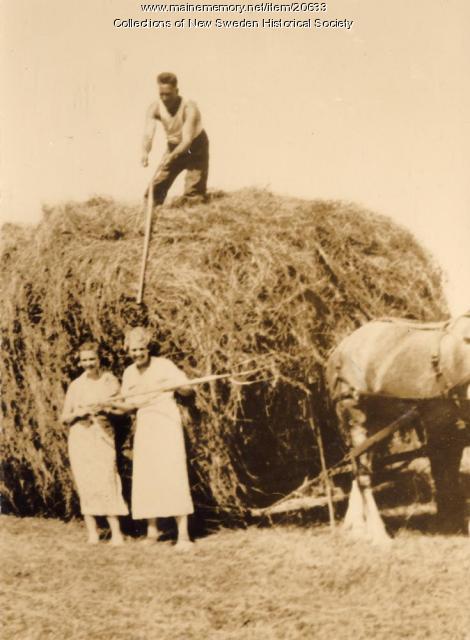Keywords: Social engagements
Item 79085
Franklin Pierce letter to G.F. Shepley, Washington, 1855
Contributed by: Maine Historical Society Date: 1855 Location: Portland; Washington Media: Ink on paper
Item 11978
Margaret Chase Smith supports the Jimmy Fund, 1953
Contributed by: Margaret Chase Smith Library Date: 1953-09-03 Location: Skowhegan Media: Photographic print
Exhibit
Begin Again: reckoning with intolerance in Maine
BEGIN AGAIN explores Maine's historic role, going back 528 years, in crisis that brought about the pandemic, social and economic inequities, and the Black Lives Matter movement in 2020.
Exhibit
Pigeon's Mainer Project: who decides who belongs?
Street artist Pigeon's artwork tackles the multifaceted topic of immigration. He portrays Maine residents, some who are asylum seekers, refugees, and immigrants—people who are often marginalized through state and federal policies—to ask questions about the dynamics of power in society, and who gets to call themselves a “Mainer.”
Site Page
View collections, facts, and contact information for this Contributing Partner.
Site Page
Mercy Hospital - Founding of Mercy
"The Auxiliary engaged in fundraising and, in its early days, did all the “necessary sewing and mending for the hospital.” An Annual Donation Week…"
Story
Sister Madeleine D’Anjou: Many detours lead to a rewarding life
by Biddeford Cultural & Heritage Center
What a journey! Sister Maddie says that "God writes straight on crooked lines."
Story
The Equal Freedom to Marry
by Mary L Bonauto
Marriage Equality, Maine, and the U.S. Supreme Court
Lesson Plan
Wabanaki Studies: Stewarding Natural Resources
Grade Level: 3-5
Content Area: Science & Engineering, Social Studies
This lesson plan will introduce elementary-grade students to the concepts and importance of Traditional Ecological Knowledge (TEK) and Indigenous Knowledge (IK), taught and understood through oral history to generations of Wabanaki people. Students will engage in discussions about how humans can be stewards of the local ecosystem, and how non-Native Maine citizens can listen to, learn from, and amplify the voices of Wabanaki neighbors to assist in the future of a sustainable environment. Students will learn about Wabanaki artists, teachers, and leaders from the past and present to help contextualize the concepts and ideas in this lesson, and learn about how Wabanaki youth are carrying tradition forward into the future.
Lesson Plan
Longfellow Studies: The Writer's Hour - "Footprints on the Sands of Time"
Grade Level: 3-5
Content Area: English Language Arts, Social Studies
These lessons will introduce the world-famous American writer and a selection of his work with a compelling historical fiction theme. Students take up the quest: Who was HWL and did his poetry leave footprints on the sands of time? They will "tour" his Cambridge home through young eyes, listen, and discuss poems from a writers viewpoint, and create their own poems inspired by Longfellow's works. The interdisciplinary approach utilizes critical thinking skills, living history, technology integration, maps, photos, books, and peer collaboration.
The mission is to get students keenly interested in what makes a great writer by using Longfellow as a historic role model. The lessons are designed for students at varying reading levels. Slow learners engage in living history with Alices fascinating search through the historic Craigie house, while gifted and talented students may dramatize the virtual tour as a monologue. Constant discovery and exciting presentations keep the magic in lessons. Remember that, "the youthful mind must be interested in order to be instructed." Students will build strong writing skills encouraging them to leave their own "footprints on the sands of time."















